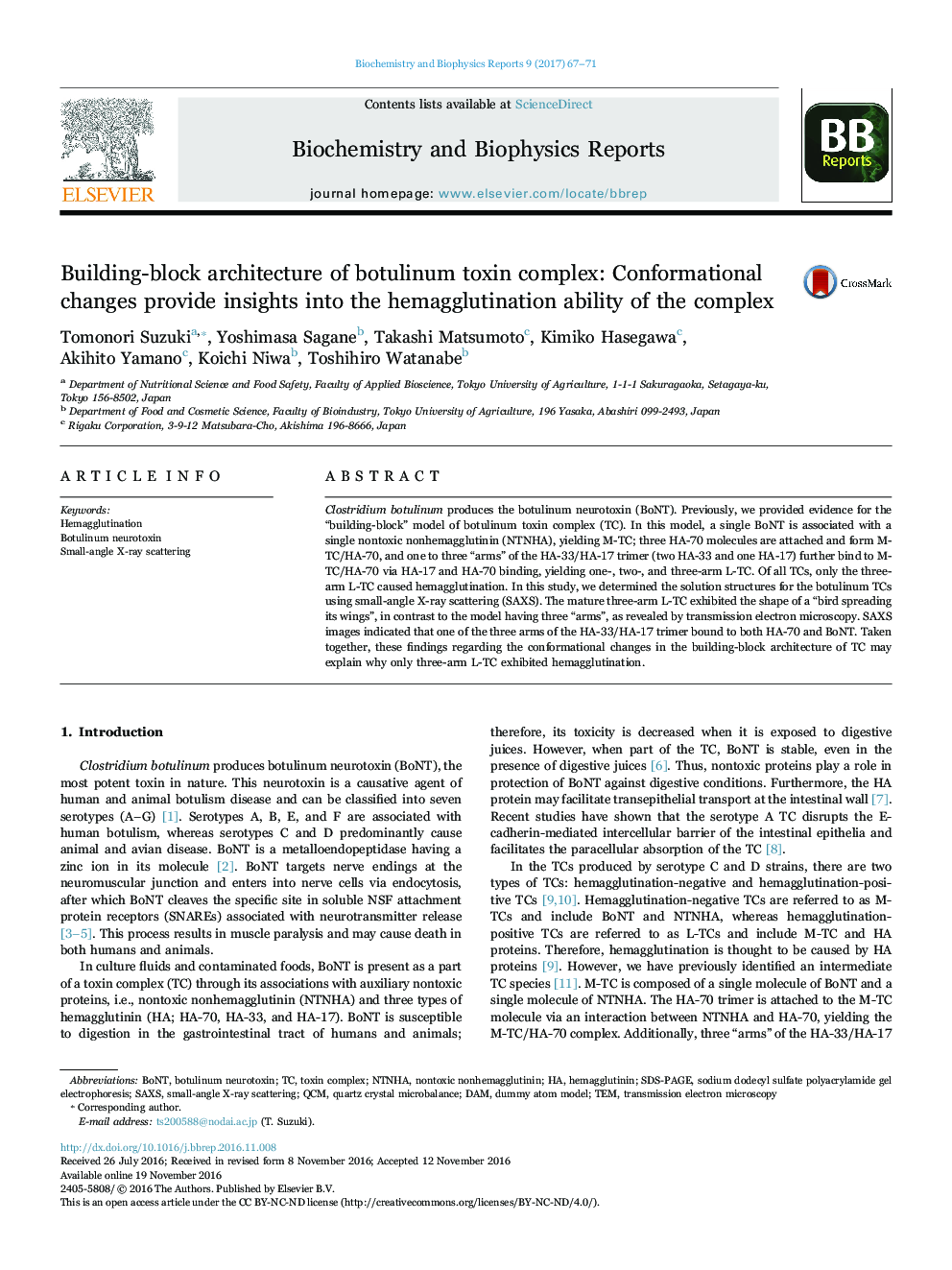| Article ID | Journal | Published Year | Pages | File Type |
|---|---|---|---|---|
| 5507076 | Biochemistry and Biophysics Reports | 2017 | 5 Pages |
â¢We examined the structures of botulinum TCs using SAXS.â¢The mature three-arm L-TC exhibited the shape of a “bird spreading its wings”.â¢One of the three arms of the HA-33/HA-17 trimer bound to both HA-70 and BoNT.â¢The building-block architecture may explain hemagglutination by the three-arm L-TC.
Clostridium botulinum produces the botulinum neurotoxin (BoNT). Previously, we provided evidence for the “building-block” model of botulinum toxin complex (TC). In this model, a single BoNT is associated with a single nontoxic nonhemagglutinin (NTNHA), yielding M-TC; three HA-70 molecules are attached and form M-TC/HA-70, and one to three “arms” of the HA-33/HA-17 trimer (two HA-33 and one HA-17) further bind to M-TC/HA-70 via HA-17 and HA-70 binding, yielding one-, two-, and three-arm L-TC. Of all TCs, only the three-arm L-TC caused hemagglutination. In this study, we determined the solution structures for the botulinum TCs using small-angle X-ray scattering (SAXS). The mature three-arm L-TC exhibited the shape of a “bird spreading its wings”, in contrast to the model having three “arms”, as revealed by transmission electron microscopy. SAXS images indicated that one of the three arms of the HA-33/HA-17 trimer bound to both HA-70 and BoNT. Taken together, these findings regarding the conformational changes in the building-block architecture of TC may explain why only three-arm L-TC exhibited hemagglutination.
